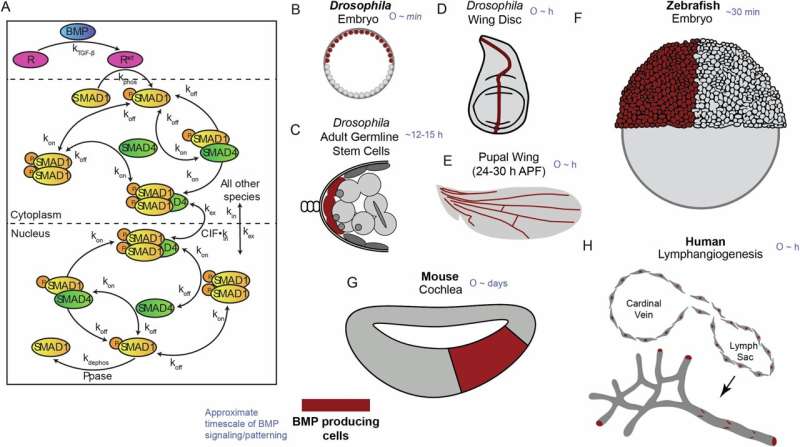Researchers at Texas A&M University have made a groundbreaking discovery that could lead to faster and more reliable human stem cell differentiation, paving the way for advancements in stem cell therapy and regenerative medicine. By unraveling the complexities of the Bone Morphogenetic Protein (BMP) Signaling Pathway, these scientists are providing a roadmap to better control and engineer stem cell behavior, ultimately enhancing the therapeutic potential of these remarkable cells.

Unveiling the Intricacies of Cell Signaling
The human body is a marvel of engineering, with cells constantly communicating and making decisions to maintain homeostasis and facilitate growth. At the heart of this complex communication network are signaling pathways, such as the Bone Morphogenetic Protein (BMP) Signaling Pathway, which play a crucial role in regulating cellular behavior.
Dr. Gregory Reeves, a chemical engineering professor at Texas A&M University, has led a team of researchers in unraveling the mysteries of the BMP Signaling Pathway. This highly conserved pathway, found in all animals, has the remarkable ability to achieve a variety of outcomes depending on the context. “A cell is definitely a complex system,” Reeves notes, “and as we study biology more and more, we find that biological systems are chock full of engineering principles.”
Balancing the Trade-Offs: The Key to Stem Cell Differentiation
The BMP Signaling Pathway is not a one-size-fits-all solution. In fact, Reeves and his team have discovered that the pathway’s systems-level behavior can vary significantly from one context to another, even though the underlying connectivity remains nearly constant.
Their findings reveal that the BMP Signaling Pathway must make trade-offs among three critical performance objectives: speed, noise canceling, and the ability to act as a linear sensor. “Different systems have different trade-offs that they’re emphasizing,” Reeves explains. “Even though the pathway is wired the same in all cells, the concentrations of signaling proteins are different from cell to cell. So in the fly embryo, you could have high levels of signaling proteins, which makes a fast system; and in the human cell, you could have low levels that’ll make a slower system, but it’ll be more noise free.”
Harnessing the Power of Stem Cells for Therapeutic Advancements
The implications of this research are profound, particularly for the field of stem cell therapy and regenerative medicine. By understanding the nuances of the BMP Signaling Pathway and its role in stem cell differentiation, researchers can now explore ways to manipulate this pathway to achieve faster and more reliable stem cell differentiation.
“With this research, we are beginning to put together a roadmap of how to alter cells, such as adult human stem cells,” Reeves explains. “They differentiate faster and more reliably, which would lead to advances in the therapeutic potential of stem cells.” As the team continues to explore the intricate balance of the BMP Signaling Pathway’s performance objectives, the potential for transformative breakthroughs in human health becomes increasingly within reach.
